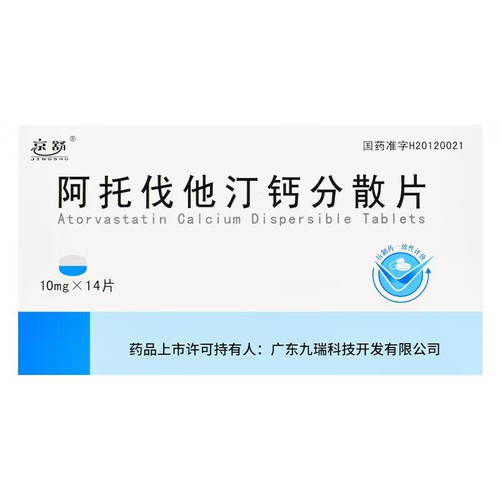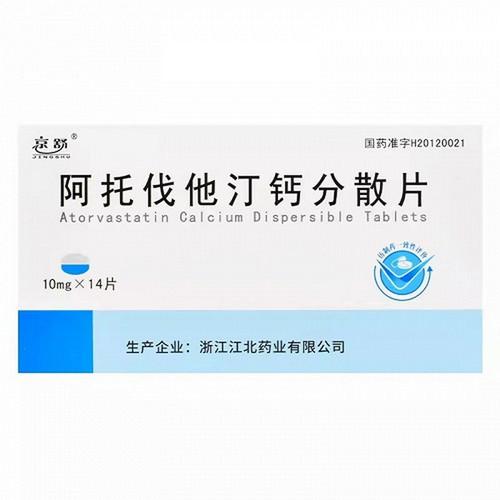Product Overview
[Drug Name]
Generic Name: Atorvastatin Calcium Dispersible Tablets
Trade Name: Entaishu Atorvastatin Calcium Dispersible Tablets 10mg x 12 tablets
[Main Ingredient]
Atorvastatin calcium.
[Properties]
This product is white or off-white tablets.
[Indications/Main Functions]
Hypercholesterolemia; patients with coronary artery disease or coronary artery disease-related critical illnesses (e.g., diabetes, symptomatic atherosclerotic disease) combined with hypercholesterolemia or mixed dyslipidemia.
[Specifications]
10mg x 12 tablets
[Dosage and Administration]
This product can be swallowed orally orally. It can also be dispersed in an appropriate amount of boiled water before oral administration. The usual starting dose is 10mg once daily. Dose adjustments should be made every 4 weeks or longer. The maximum dose is 80mg once daily. Atorvastatin can be taken once daily at any time of day, regardless of mealtime.
[Adverse Reactions]
1. The most common adverse reaction to this product is gastrointestinal discomfort; others include headache, rash, dizziness, blurred vision, and taste disturbance. 2. It may occasionally cause a reversible increase in serum aminotransferase levels. Therefore, liver function should be monitored. 3. Rare adverse reactions include impotence and insomnia. 4. Rare adverse reactions include myositis, myalgia, and rhabdomyolysis, manifesting as muscle pain, fatigue, fever, and accompanied by elevated blood creatine phosphokinase and myoglobinuria. Rhabdomyolysis can lead to renal failure, but this is rare. 5. Concomitant use of this product with immunosuppressants, folic acid derivatives, niacin, gemfibrozil, and erythromycin may increase the risk of myopathy. 6. Hepatitis, pancreatitis, and allergic reactions such as angioedema have been reported.
[Contraindications]
This product should not be used in patients with allergies. Use with caution in patients with allergic conditions.
[Drug Interactions]
1. Concomitant use of this product with oral anticoagulants may prolong the prothrombin time and increase the risk of bleeding. 2. Concomitant use of this product with immunosuppressants such as cyclosporine, erythromycin, gemfibrozil, and niacin may increase the risk of myolysis and acute renal failure. 3. Colestipol and cholestyramine may reduce the bioavailability of this product; therefore, this product should be taken 5 hours after the former.
[Precautions]
1. Regularly check blood cholesterol and creatine phosphokinase during treatment. Blood aminotransferases may increase with this product. Patients with a history of liver disease should also have regular monitoring of liver function tests. 2. During treatment with this product, if blood aminotransferases increase to three times the upper limit of normal, or if blood creatine phosphokinase increases significantly, or if symptoms of myositis or pancreatitis occur, discontinue this product. 3. If hypotension, severe acute infection, trauma, or metabolic disturbances occur while using this product, be aware of the potential for renal failure secondary to myolysis. 4. The dose of this product should be reduced in patients with renal insufficiency. 5. This product should be taken with food to facilitate absorption. 6. Diet therapy is always the primary method for treating hyperlipidemia. Increasing exercise and losing weight are better than any form of medicine.










